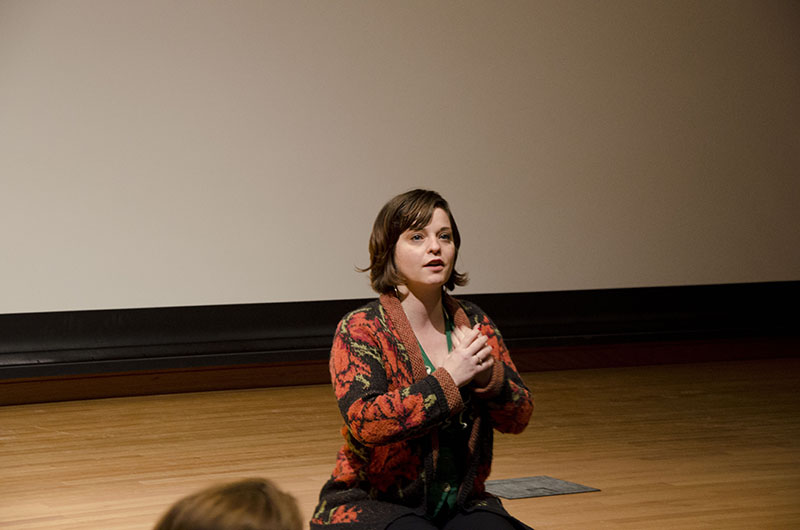‘Our Nixon’ Film Provides Glimpse Behind White House Doors
Director Penny Lane discusses the process of digging through archival materials to compile the documentary Our Nixon, which screened Tuesday night in Dye Lecture Hall. The film utilized Super 8 footage taken by President Nixon’s aides to showcase a more personal aspect of his presidency.
April 4, 2014
Documentary films occupy an awkward spot, teetering uncomfortably in the space between art and reality, but not quite at home in either category. Archival documentary, patched together from material already available in a film library or archive, only compounds this difficulty, since the filmmaker does not even produce the footage, but merely edits it into a palatable form. Penny Lane’s awardwinning all-archival documentary Our Nixon, which screened Tuesday night in Dye Lecture Hall in an event sponsored by the Art department, enters this murky territory with aplomb, ultimately emerging staunchly on the side of art.
The documentary is composed of archival footage and Nixon’s own White House tapes arranged around a centerpiece of silent Super 8 recordings taken by Nixon aides H.R. Haldeman, John Ehrlichman and Dwight Chapin. The intimate nature of those recordings means that the documentary takes a human approach to the often-caricatured Nixon presidency, without getting caught up in the minutiae of governance or the Watergate scandal. It is this restraint that makes Our Nixon art instead of simply yet another cynical late’60s political documentary. The Super 8 footage is overlaid with sound from interviews, the White House tapes or, most effectively, music. The absence of a third-party narrator allows the archival material to speak for itself.
This lack of a narrator also nicely dovetails thematically with the prevailing ethos of the documentary: This is the Nixon White House as those close to the president saw it, not as the press or public portrayed it. Through the cameras of Haldeman, Ehrlichman and Chapin, the documentary audience is walked through the motions of political life and surprised by its frequent intersections with the personal. The camera hovers lovingly on First Daughter Tricia Nixon during a dance at her wedding, records a costumed Easter bunny surrounded by children on the White House lawn or follows a bird as it rummages around outside — the sort of mundane, personal images rarely associated with the Nixon presidency.
The documentary does not address the Watergate scandal that would end Nixon and his aides’ political careers until the end, a wise choice that sets the focus of the film squarely away from the scandal until it simply cannot be ignored. As the film’s director and co-producer Penny Lane shared in the audience discussion that followed the screening, the intention was to originally cut the documentary in such a way that Watergate never appeared, with the assumption that the audience would be informed enough to fill in that blank for themselves. While that direction was ultimately not taken, the thought process behind it is evident in the film. No one needs another film about Watergate, and Our Nixon aims to be something subtler and more bittersweet.
As Lane emphasized after the screening, the film is not about Nixon, although it certainly provides a fascinating and rarely-seen perspective of the president. Rather, it is a film about its three off-camera stars — or rather, the stars holding the cameras — Haldeman, Ehrlichman and Chapin, and the world as seen through their eyes. The Super 8 footage that bolsters the film had never been transferred from that format until Lane and her team funded it, and so Our Nixon brought this valuable archival footage to people who would otherwise have never been aware of its existence. More than that, though, the documentary transforms this footage and the other archival resources in order to provide a unique window into an insular world that is typically only viewed one-dimensionally. The end result is nuanced, fascinating and, yes, artistic.


























